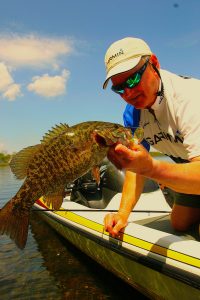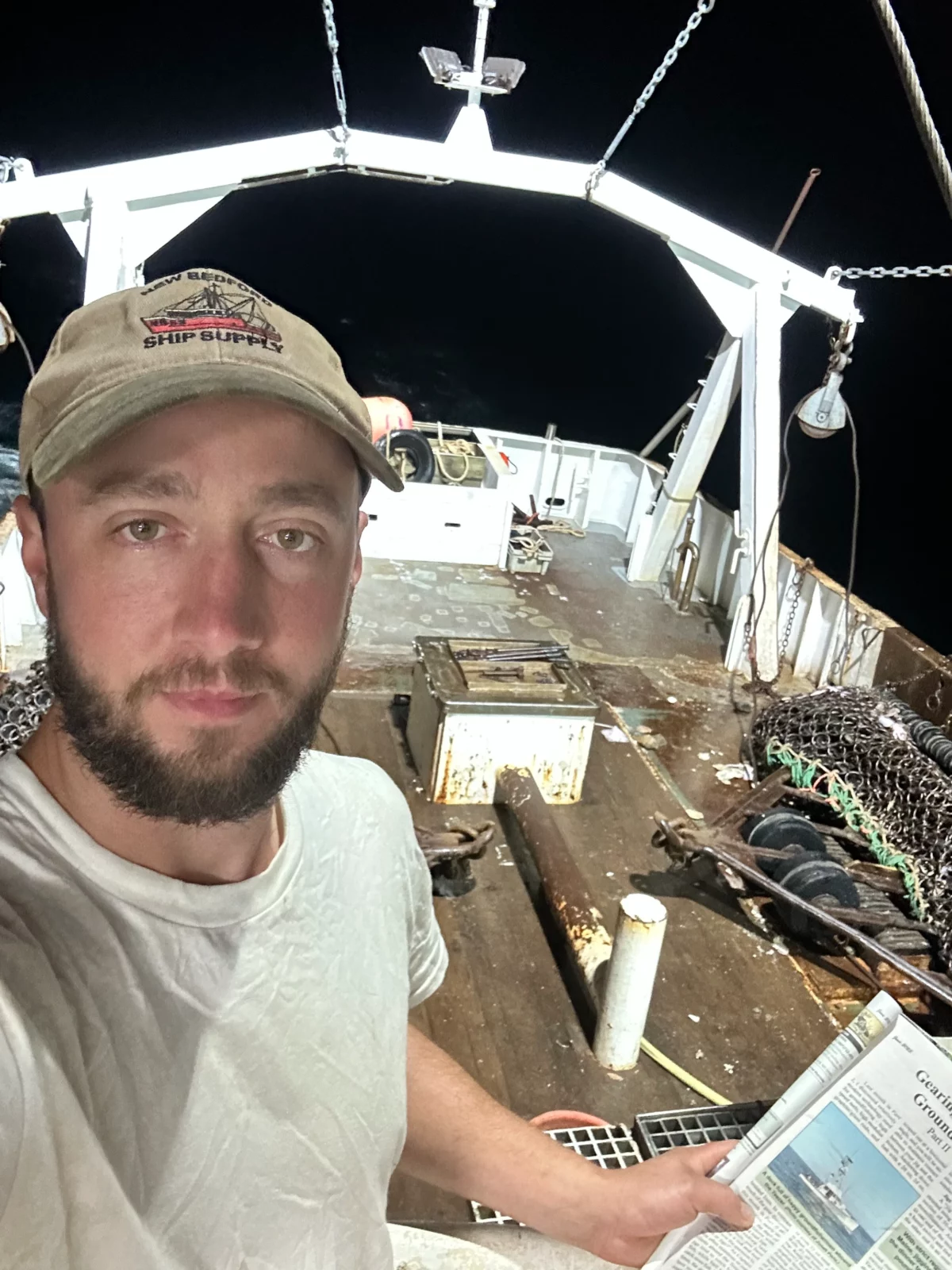Fishing the Belgrades

by Dennis Bolduc
Ever since I was a kid growing up in Waterville, fishing in the Belgrades was a topic I heard often. Unfortunately, my family did little to none when it came to fishing. I was very fortunate to have lived next door to some great neighbors who always took the time to take me fishing. The seven lakes that made up the Belgrade chain (North Pond, East Pond, Salmon and McGrath Ponds, Long Pond, Great Pond and finally Messalonskee Lake) were well known for great catches of salmon, brook trout, brown trout, and white perch. People from all over the state and even out of state came to fish the Belgrades. Those were the days fishermen were regularly catching 4-5 lb salmon, 6 lb brook trout, 8 lb brown trout and even a good mess of 2 lb white perch. I thought those days would never end, but over the last 30 years, the fishing has changed in the Belgrades. There are new species inhabiting the Belgrades and on some lakes some species have disappeared. Let’s take an indepth look at the Belgrade Lakes.
The Belgrade chain of lakes consist of seven lakes. East Pond flows into North Pond. North Pond empties into Great Pond. McGrath Pond flows into Salmon Lake and Salmon Lake also empties into Great Pond. Great Pond flows into Long Pond and then, Long Pond empties into Messalonskee Lake by way of the Belgrade Stream. All seven lakes are part of the Messalonskee Stream drainage which is one of the tributaries to the Kennebec River.
Messalonskee Stream has a drainage area of approximately 177 square miles. The seven Belgrade lakes have a combined surface area of 20,311 acres. All seven lakes are accessible by way of boat launches except McGrath Pond. People must use the boat launch on Salmon Lake and then travel through the narrows to McGrath Pond. The deepest lake is Messalonskee with a maximum depth of 113 feet. The shallowest lake is North Pond with a maximum depth of 20 feet.
There are over 20 different fish species swimming in the Belgrades. They consist of the following: American eel, Eastern brook trout, Black crappie, Brown trout, Bullhead (Horned pout), Chain pickerel, Fallfish (Chub), Four-spine stickleback, Golden shiner, Landlocked salmon, Splake, Landlocked alewife, Largemouth bass, Smallmouth bass, Northern pike, Pumpkinseed sunfish, Rainbow smelt, Redbreast sunfish, Slimy sculpin, Threespine stickleback, White perch, White sucker, and finally Yellow perch.
Even though there is a wide variety of fish to target in the Belgrades, sportsmen usually set their sights on the following favorites: Brown trout, Brook trout, Landlocked salmon, Largemouth and Smallmouth bass, Northern pike, and White perch.
Let’s talk about each of the Belgrade lakes and how the fishing has changed over the years. East Pond has a surface area of 1,823 acres and a maximum depth of 27 feet. The primary fish species are largemouth and smallmouth bass, white and yellow perch, chain pickerel, and brown trout. For years, it was known for growing large brown trout until the state stopped stocking brown trout when the only boat landing was closed in 1988. Three years later, the state put in a new boat launch (1991), the stocking resumed. Also, sometime in the 1980’s, someone took it upon themselves to illegally stock black crappie. Anglers should remember that it is illegal to stock any water in the state of Maine without a permit from the Commissioner of the Department of Inland Fisheries and Wildlife. With this new introduction of crappie, East Pond is having a hard time to regain its reputation of large brown trout.
North Pond has a surface area of 2,873 acres and a maximum depth of 20 feet. Their fish species consist of smallmouth and largemouth bass, white perch, chain pickerel, and northern pike. An occassional brown trout can be caught since they sometimes migrate from East Pond. With the illegal introduction of northern pike, ice fishing on North Pond has increased ten fold. In the past, there were only a handfull of shacks over the perch grounds each season. Now, you can count dozens more spread out all over the lake. The current state record for northern pike was caught on this lake.
McGrath Pond is the smallest of the seven Belgrade lakes. It has a surface area of 486 acres with a maximum depth of 27 feet. The principal fish species are smallmouth and largemouth bass, white and yellow perch, chain pickerel, and brown trout. Years ago, because of the great smelt population, brown trout caught were in the wall hanging catergory. Now, this is a lake that also has black crappie in it. Crappie feed on the smelts which in turn is hurting the brown trout fishery.
Salmon Lake has a surface area of 667 acres and a maximum depth of 57 feet. They have the same fish species as McGrath Pond and also the same problem of no more monster brown trout. Not only are the black crappie feeding on the smelts, but, the overharvesting of smelts through the ice has contributed to the plight of the brown trout. These small lakes should be single hook and line to catch smelts, not harvesting smelts through the ice with drop nets.
The next lake is the biggest of all the Belgrade lakes. Great Pond has a surface area of 8,239 acres and a maximum depth of 69 feet. Years ago, the fishing was superb for landlocked salmon and brook trout. They also had a terrific smelt population. Today, there are no salmon and very few smelts. Landlocked alewives are the primary forage fish. The state stopped stocking landlocked salmon and replaced them with brown trout in 1995. The biggest draw to Great Pond has to be the northern pike. People from all over the state visit this lake just to try for one of the 30 plus pound pike that inhabit the lake. When you ask people what they think of pike, you usually get one of two reponses. Pike are extremely hated or overwhelmingly loved.
The next lake in the Belgrade chain is the second largest of the seven lakes. Messalonskee Lake has a total surface area of 3,510 acres and a maximum depth of 113 feet. Sportsmen fish for smallmouth and largemouth bass, white perch, chain pickerel, brown trout, splake, northern pike, and large rainbow smelt. Many years ago, the brook trout fishing was so good that fish were being caught in the 8 to10 pound range. The problem today is the smelts grow too large to be forage for all the fish except the northern pike. In 1993, the state stopped stocking salmon and in 1994, started a relatively new brown trout and splake program. It’s very rare to catch a salmon in Messalonskee today, but people are starting to cash in on the brown trout, northern pike, and the splake.
I’ve saved the seventh and final Belgrade lake for last with very good reasons. Long Pond is one of the state’s best salmon waters. It is one of the clearest waters of the seven Belgrade lakes which might explain why it has such a tremendous smelt population. It is the only Belgrade lake closed to ice fishing. It has a surface area of 2,714 acres and a maximum depth of 106 feet. Except for the last 4 or 5 years, the salmon fishing has been nothing short of spectacular. The last few years, the northern pike are finally catching up to the salmon. They have the numbers and the size to devastate the salmon fishery in Long Pond. People are catching salmon in the 3 to 5 pound category with long pike scars on them. The state net trappings, which the state has been doing every October for the last 10 years, are showing the salmon numbers dropping dramatically especially the last few years. Some people argue that the lake is overfished while others are blaming the pike. I suspect both are contributing to the low salmon numbers. It’s too bad that the state doesn’t remove the pike each spring since they already go to the trouble of net trapping these pike during their spawning run. The department has, in the past, trapped 30 pound ripe females with thousands of eggs. I have spoken to the biologists and asked them why they can’t remove the pike since they are already anesthesized so they can be measured and weighed. Their response was that if they removed the pike, then more pike would just come over to the Belgrade Village dam during each spring’s high water runoff. When I was a kid, the Belgrade Village dam had a fish screen to prevent fish from Great Pond entering Long Pond. The fish screen is no longer at the dam. I feel if the state replaces that fish screen and removes the spawning pike in the springtime, Long Pond’s salmon fishery will flourish once again.
Time will tell.
Dennis Bolduc lives in Oakland and is a devoted angler.
For more fishing articles, be sure to subscribe to our monthly fishing magazine the Northwoods Sporting Journal.
To access past copies of the Northwoods Sporting Journal in digital format at no charge, click here.

 My name is Cody Fish. I enjoy reading the Northwoods Sporting Journal while out on my fishing trips aboard the two 80-90 foot offshore scallop boats I work on. Our trips are typically a week to two weeks long. As we steam out to the fishing grounds, or even home, I frequently find myself reading the whole journal cover to cover. Wonderful advice, tips, and stories to help me remember just how beautiful the state I call home is. I reside in the town of Union, Maine and am an avid deer Hunter and trout fisherman. I am attaching a picture of me holding the journal as I steam the boat towards Cape Cod.
- Cody Fish"
My name is Cody Fish. I enjoy reading the Northwoods Sporting Journal while out on my fishing trips aboard the two 80-90 foot offshore scallop boats I work on. Our trips are typically a week to two weeks long. As we steam out to the fishing grounds, or even home, I frequently find myself reading the whole journal cover to cover. Wonderful advice, tips, and stories to help me remember just how beautiful the state I call home is. I reside in the town of Union, Maine and am an avid deer Hunter and trout fisherman. I am attaching a picture of me holding the journal as I steam the boat towards Cape Cod.
- Cody Fish"